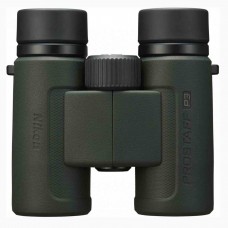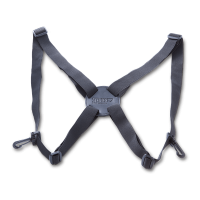Recommended Accessories
Steiner Comfort Harness
N$395.00 Ex Tax:N$395.00
One of the lightest binoculars in its class. Fully multilayer-coated lenses ensure image brightness and a crisp, clear visual experience. All lenses and prisms are made with Nikon’s Eco Glass, which is free of lead and arsenic. The fiberglass-reinforced polycarbonate design is highly durable, waterproof and fogproof. Rubber armouring enhances shock resistance and supports the firm, comfortable grip. Turn-and-slide rubber eyecups with multi-click adjustments facilitate positioning the binoculars to the correct eye point. The long eye relief makes it easy to enjoy a clear and full field of view, even for users who wear eyeglasses
Compact and lightweight 42mm-objective lens diameter model for superior portability (565g for 8x42, 575g for 10x42)
Wide apparent field of view (53.4° for 8x42, 62.9° for 10x42)
High-reflectivity silver-alloy mirror coating applied on the mirror surfaces of the prisms for a bright and clear view.
Multilayer-coated lenses for bright images
Long eye relief design ensures a clear field of view, even for eyeglass wearers
Lead- and arsenic-free glass is used for all lenses and prisms
Turn-and-slide rubber eyecups with multi-click facilitate easy positioning of eyes at the correct eyepoint
Waterproof (up to 1m/3.3 ft. for 10 minutes) and fog-free with O-ring seals and nitrogen gas
Rubber armouring for shock resistance and a firm, comfortable grip
Lightweight body uses fiberglass-reinforced polycarbonate resin
| Product Specification | ||||
| Specifications | Magnification (x) | 10 | ||
|---|---|---|---|---|
| Objective diameter (mm) | 42 | |||
| Angular field of view (Real/degrees) | 7.0 | |||
| Angular field of view (Apparent/degrees) | 62.9 | |||
| Field of view at 1,000m (m) | 122 | |||
| Exit pupil (mm) | 4.2 | |||
| Relative brightness | 17.6 | |||
| Eye relief (mm) | 15.7 | |||
| Close focusing distance (m) | 3.0 | |||
| Length (mm) | 150 | |||
| Width (mm) | 130 | |||
| Depth (mm) | 52 | |||
| Weight (g) | 575 | |||
| Interpupillary distance adjustment (mm) | 56-72 | Type | |
Roof |
Nikon Prostaff P3 10x42
- Brands Nikon
- Product Code:Nikon Prostaff P3 10x42
- Availability:In Stock
-
N$4,995.00








